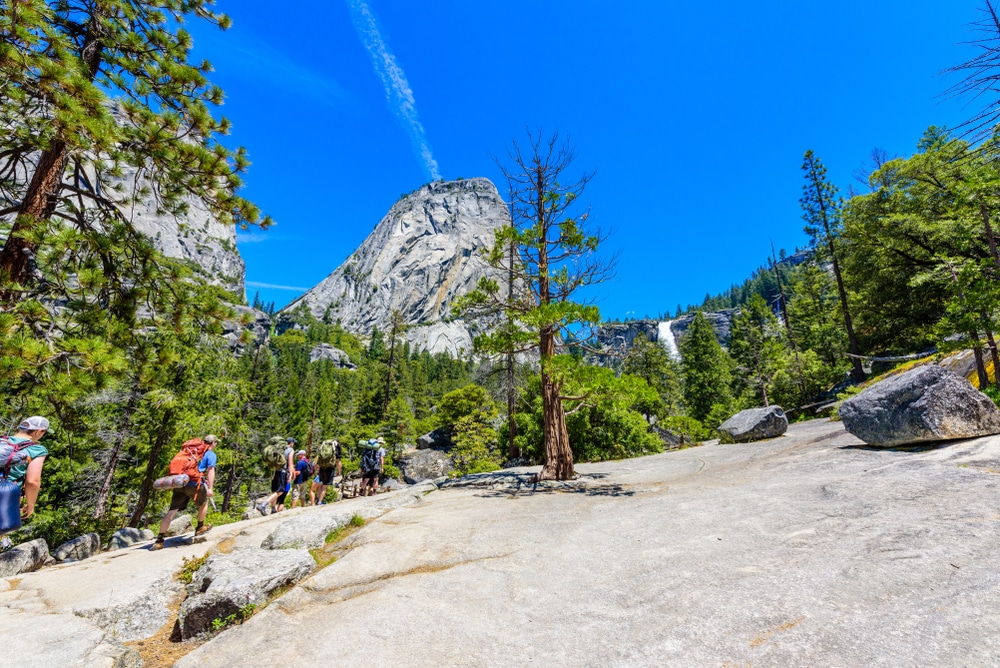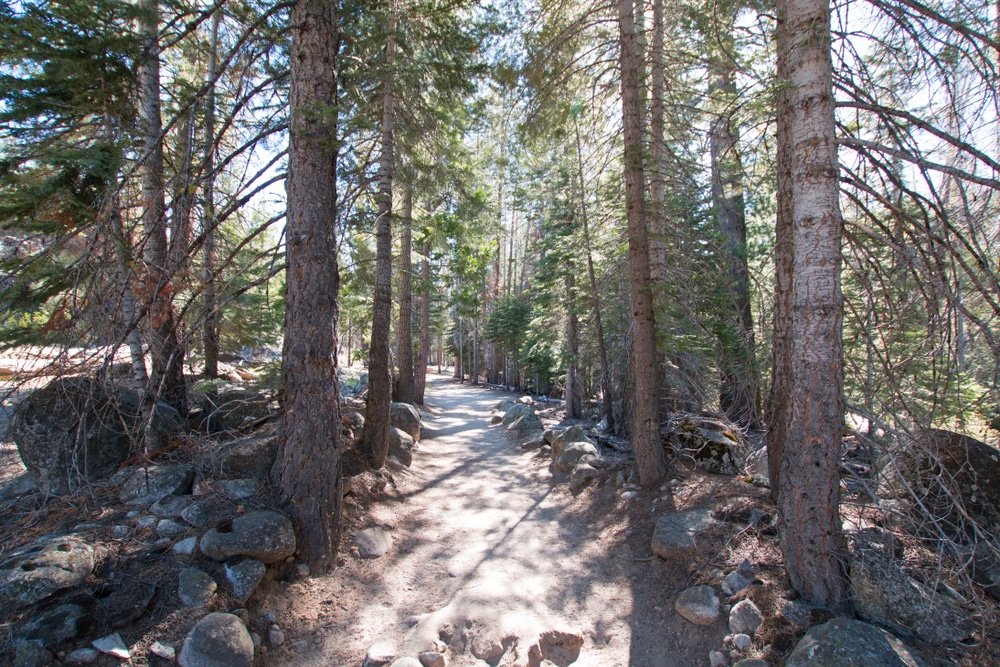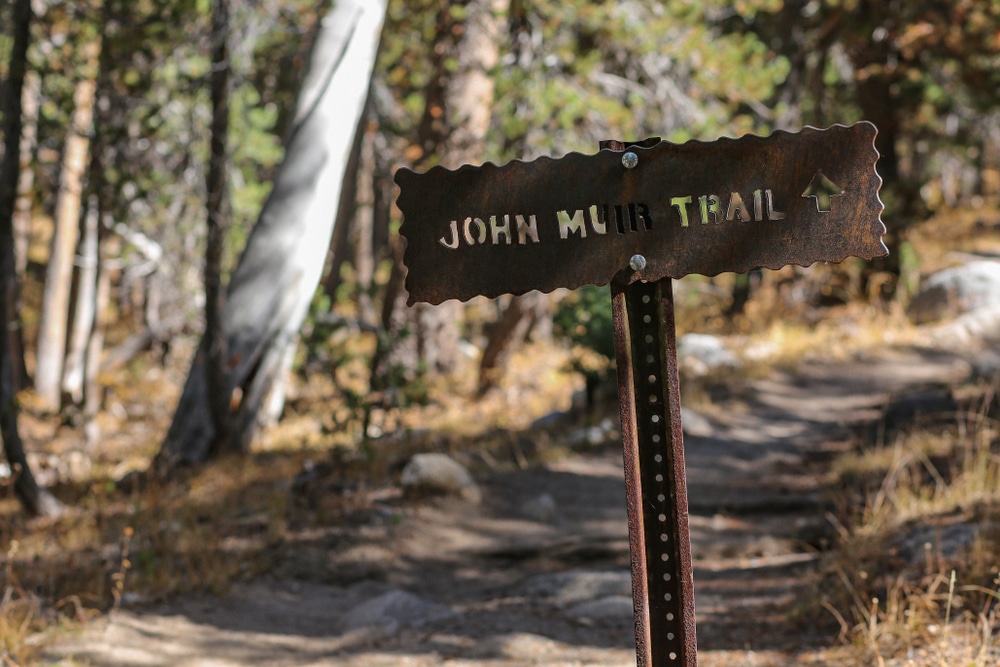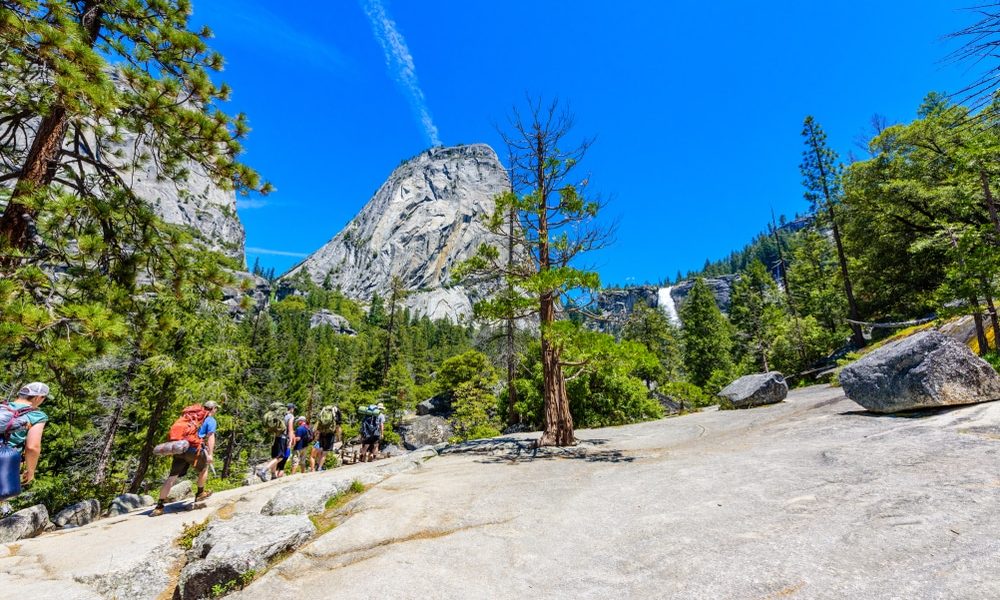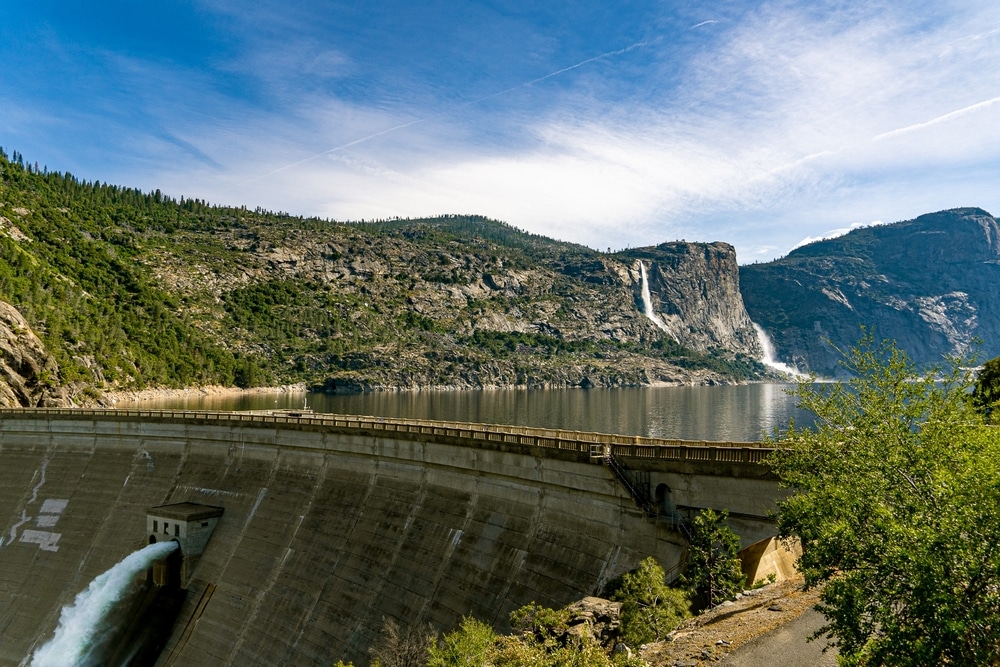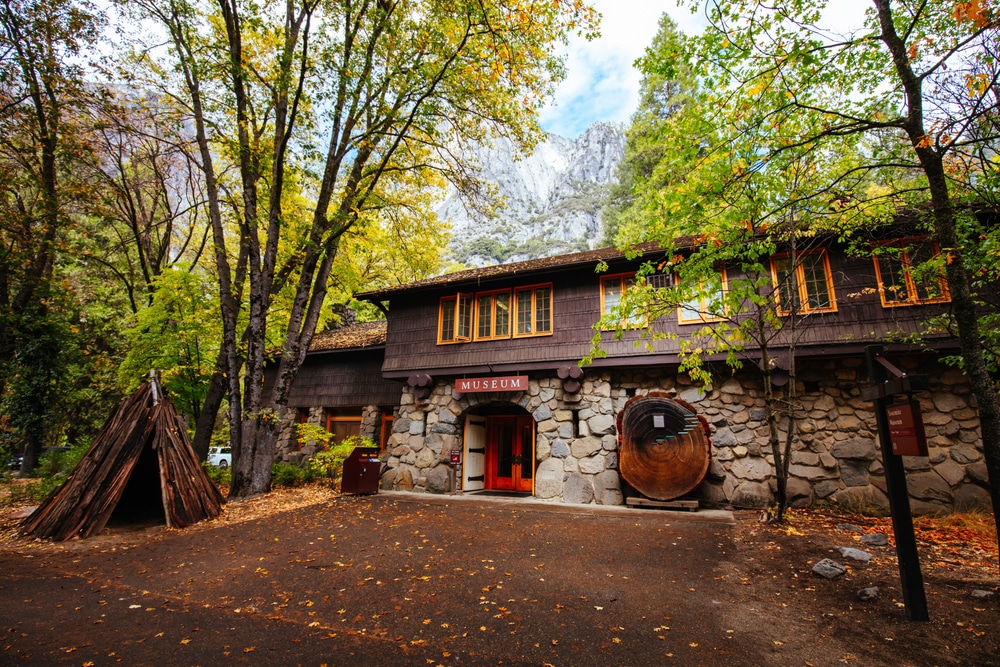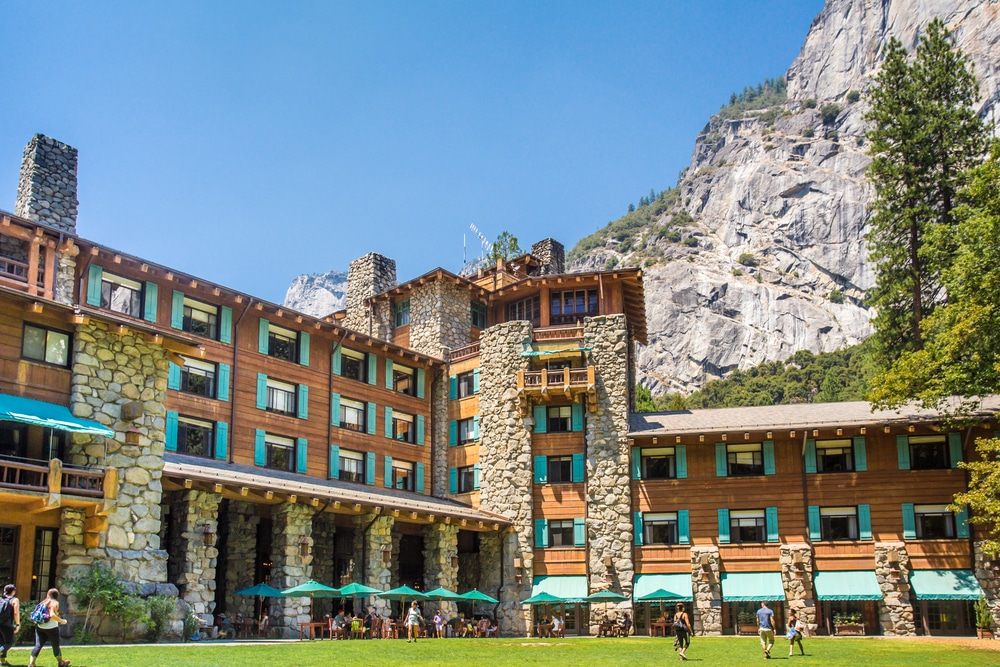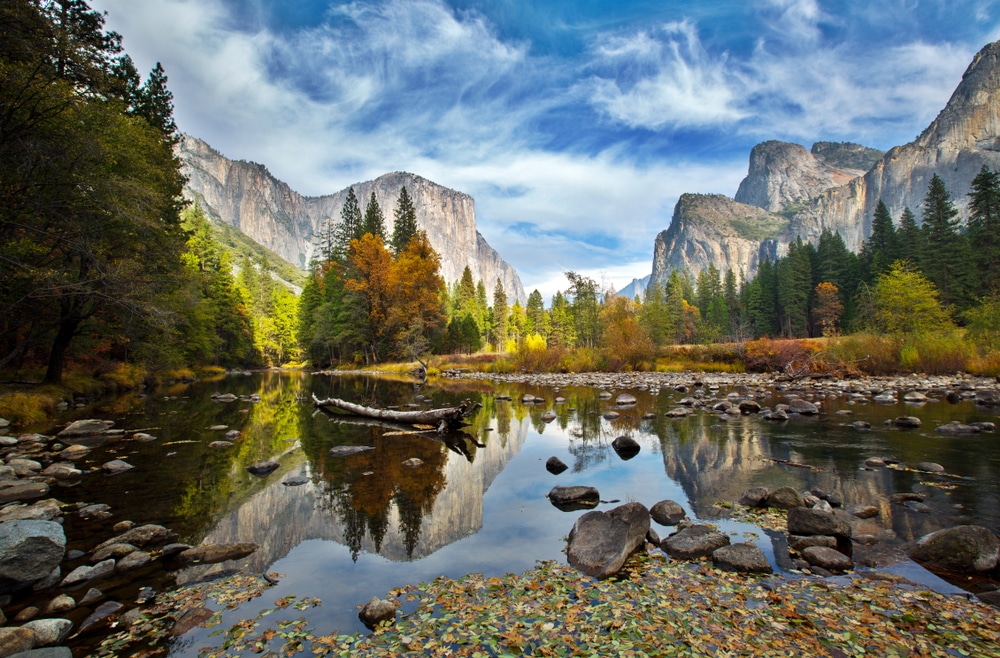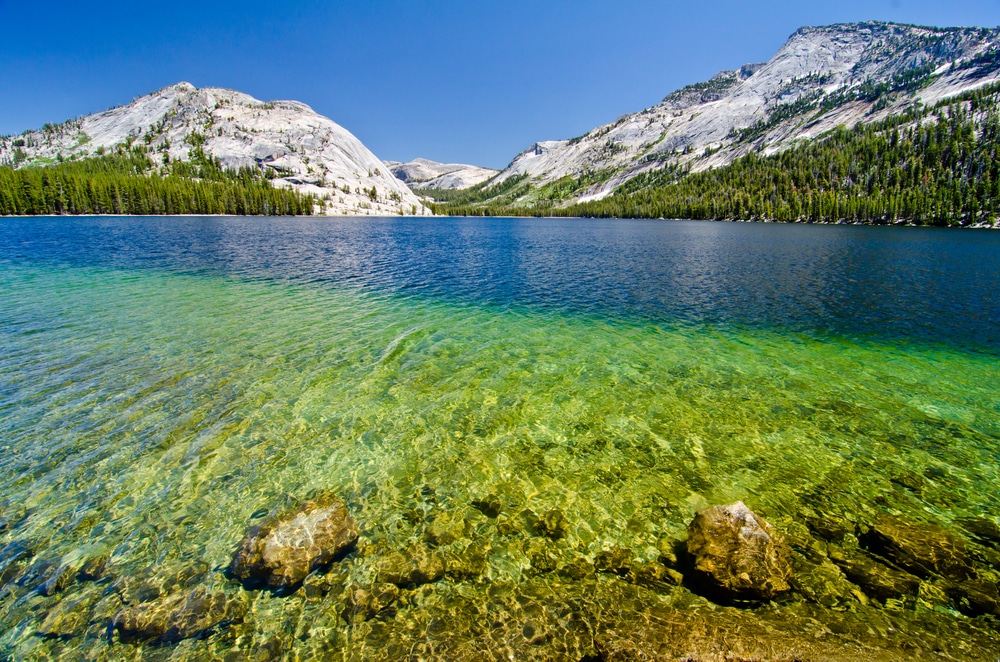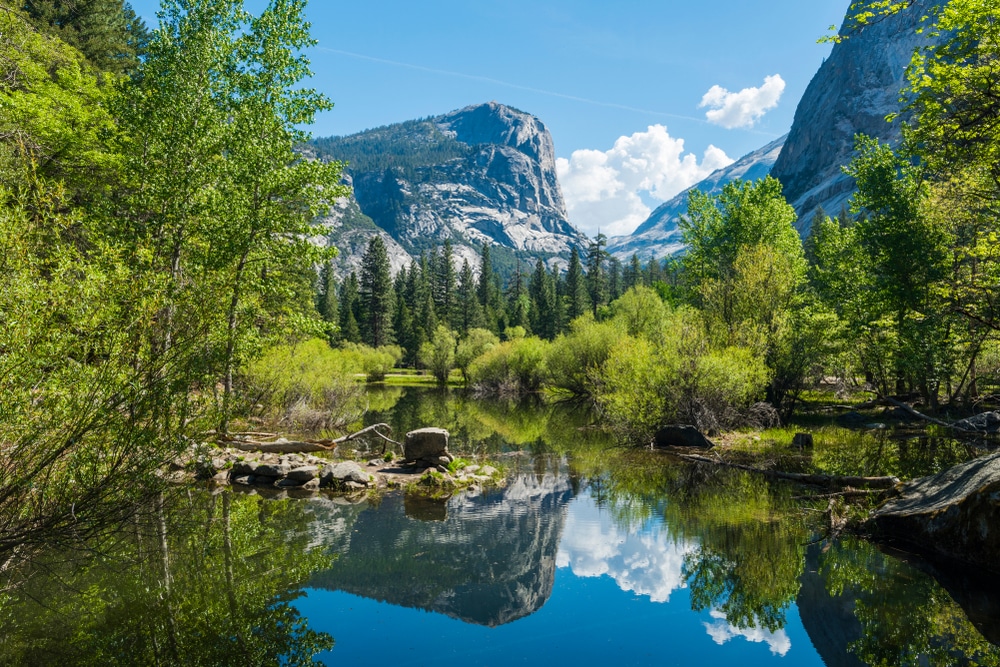The John Muir Trail (JMT) is one of the United States’ premier long-distance hiking trails, offering an unparalleled trek through California’s rugged Sierra Nevada mountains. Named after John Muir, an influential naturalist and conservationist, the trail covers approximately 211 miles (340 kilometers) from Yosemite Valley to Mount Whitney, the highest peak in the contiguous United States. It is renowned for its stunning scenery, challenging terrain, and the profound sense of wilderness it offers.
Trail Overview
The JMT passes through Yosemite National Park, the Ansel Adams Wilderness, Sequoia National Park, and King’s Canyon National Park, culminating at the summit of Mount Whitney at 14,505 feet (4,421 meters). Along the way, hikers traverse alpine and high-mountain landscapes, including lush meadows, pristine lakes, and rugged peaks.
Elevation and Difficulty
- The trail climbs over several mountain passes, with many exceeding 11,000 feet, making it a strenuous hike that requires good physical fitness and proper acclimatization to altitude.
- Total elevation gain throughout the hike is substantial, with numerous ascents and descents.
Key Features and Highlights
Scenic Landmarks
- Yosemite Valley: The starting point for northbound hikers, featuring iconic views like Half Dome and El Capitan.
- Tuolumne Meadows: A serene, high-altitude meadow offering a respite before the high passes of the Sierra.
- Evolution Basin: Known for its stunning evolutionary landscape and pristine lakes.
- Mount Whitney: The trail’s southern terminus and the highest point in the contiguous United States, offering expansive views of the Great Basin.
Biodiversity
- The trail covers multiple ecological zones, from montane forests to alpine tundra, supporting diverse flora and fauna, including mule deer, black bears, and a variety of bird species.
Planning Your Hike
Permits and Regulations
- A wilderness permit is required for all overnight stays on the JMT. These can be competitive and must be reserved well in advance, particularly for popular starting points like Yosemite.
- Certain regulations must be followed, including proper food storage to protect wildlife and minimize bear encounters.
Best Time to Hike
- The ideal months to hike the JMT are typically July through September, depending on snow conditions. This period offers the most stable weather and generally snow-free trails.
Resupply Points
- Hikers typically resupply at several points along the trail, such as Red’s Meadow, Muir Trail Ranch, and Independence via Kearsarge Pass. Planning resupply points is crucial for managing pack weight and ensuring sufficient provisions.
Challenges and Safety
Altitude Sickness
- Given the high elevations, altitude sickness is a risk. Acclimatization days and awareness of altitude illness symptoms are important.
Weather Conditions
- Weather in the High Sierra can change rapidly, and hikers must be prepared for conditions ranging from intense sun to sudden snowstorms, even in summer.
Physical Preparation
- Due to the trail’s length and difficult terrain, physical preparation is crucial. Hikers should engage in comprehensive conditioning, including cardio and hiking with a loaded backpack.
Environmental Impact and Conservation
The JMT traverses some of the most pristine wilderness areas in the United States, and hikers are urged to practice Leave No Trace principles to minimize their environmental impact. This includes packing out all trash, using established campsites, and avoiding sensitive areas.
Conclusion
The John Muir Trail is more than just a hiking trail; it’s a pilgrimage through some of the most breathtaking landscapes in North America. It offers an escape into nature and a test of physical and mental endurance. For many, the journey along the JMT is a transformative experience, embodying John Muir’s own philosophy of finding solace and inspiration in the natural world. Whether you’re an experienced long-distance hiker or someone seeking to immerse themselves in the wilderness, the John Muir Trail presents an adventure of a lifetime.
